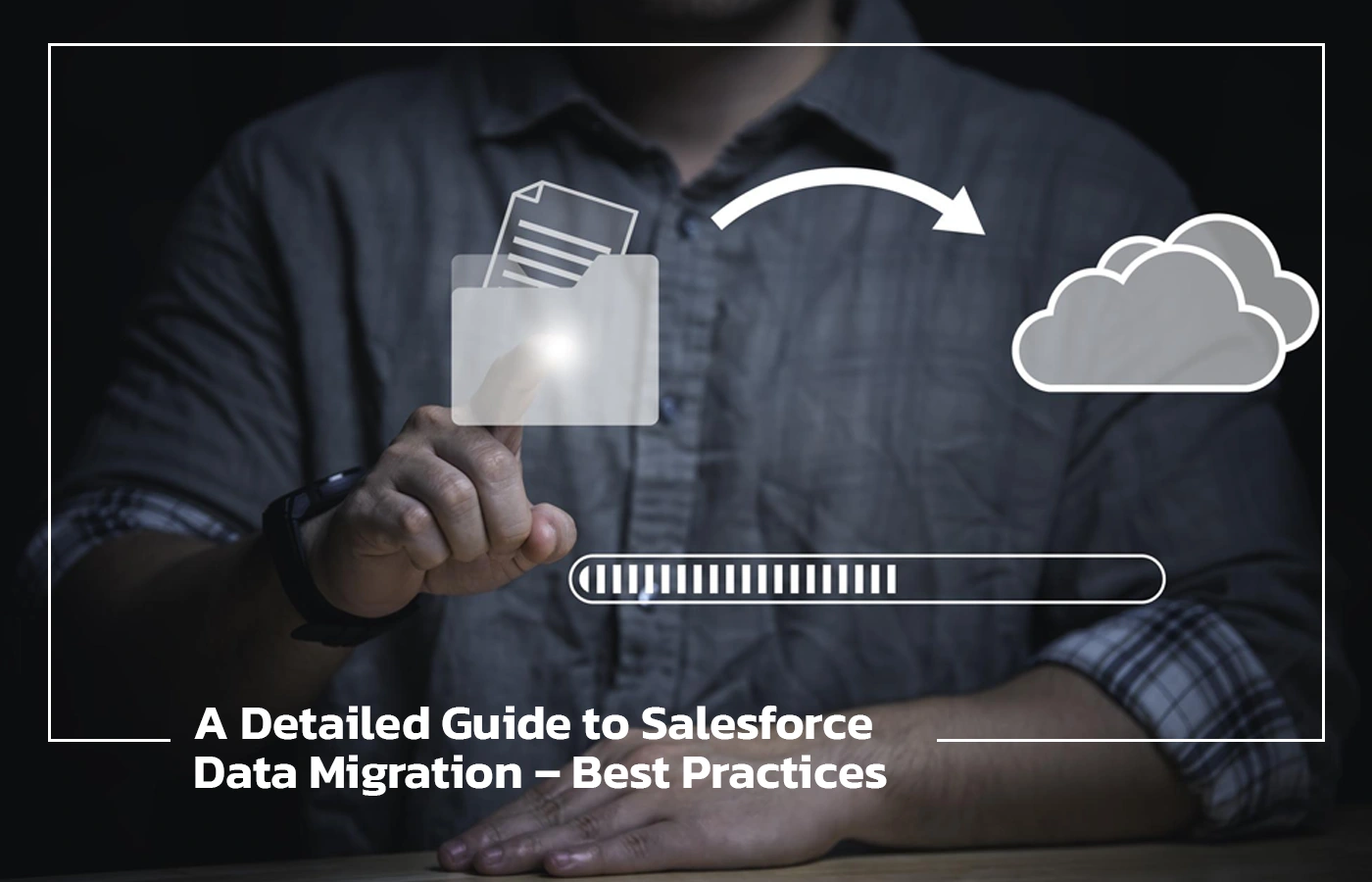A Detailed Guide to Salesforce Data Migration – Best Practices

Introduction
Are you considering Salesforce migration services to streamline your business processes and leverage Salesforce’s powerful capabilities? A successful migration is more than just moving data—it’s about preserving data integrity, minimizing risks, and ensuring your new CRM platform drives business success.
In this first part of our two-part blog series, we’ll focus on key best practices and the critical planning phase of Salesforce data migration. Following these steps will set the foundation for a seamless and successful migration.
What is Salesforce Data Migration and Why Is It Important?
Data migration is the process of transferring data from a legacy system (like old CRMs, spreadsheets, or on-premise databases) to Salesforce. When done correctly, this transition enables businesses to:
- Improve decision-making with clean, reliable data.
- Enhance customer experiences through accurate records.
- Optimize workflows and unlock Salesforce’s full potential.
However, poorly executed data migrations can lead to data loss, corruption, or downtime. Hence, planning, data quality assessment, and execution are vital to achieving a smooth transition.
Best Practices for Salesforce Data Migration
Define Scope and Goals
Start by outlining clear project goals:
- What data will be migrated? (e.g., customer records, sales histories)
- What are the objectives? (e.g., eliminate duplicates, enhance usability)
- Having a well-defined scope prevents scope creep and ensures alignment with your business needs.
Assess Source and Target Systems
Before migrating, thoroughly analyze your existing system and Salesforce to ensure compatibility:
- Understand data structure: Identify fields, relationships, and dependencies.
- Map fields: Plan how each field in the source system aligns with Salesforce fields to avoid mismatches.
Pro Tip: Use tools like Salesforce Schema Builder to visualize Salesforce’s data structure for better planning.
Prioritize Data Quality
The success of the data migration depends on the quality of data. Follow these steps:
- Identify inconsistencies: Address missing fields, duplicates, or errors.
- Data cleansing: Standardize data formats, correct inaccuracies, and remove unwanted records.
- Deduplication: Use tools to identify and merge duplicate records while preserving the most accurate information.
Pro Tip: Clean the data before migration to avoid transferring clutter into Salesforce and risking poor data reliability.
Choose the Right Data Migration Approach
Selecting the best approach is critical to acheive success:
Manual Migration: Suitable for small datasets but time-consuming.
Automated Tools: Leverage tools like Salesforce Data Loader or ETL platforms for large datasets.
APIs: Use APIs for complex, real-time migrations.
Evaluate tools based on:
- Scalability
- Ease of use
- Support to migrate data from different data sources
Pro Tip: Test a trial migration first with a subset of data to identify issues early and refine your approach.
Create a Dedicated Migration Team
Building the right team is essential:
- Project Manager: Oversees timelines, milestones, and team collaboration.
- Data Analysts: Analyze and validate data.
- Salesforce Administrators: Configure and test Salesforce post-migration.
Effective communication is key. Use project management tools and regular check-ins to align stakeholders and IT teams throughout the process.
Plan for Testing and Validation
Test extensively to ensure a flawless migration:
- Validate data accuracy: Compare source and migrated data.
- Perform functional testing: Ensure Salesforce works as intended with the new data.
- Resolve errors promptly to maintain data integrity.
Pro Tip: Create diverse test scenarios, including edge cases, to catch potential issues and ensure no surprises post-migration.
Key Takeaways
The planning phase of a Salesforce data migration is the foundation for success. By assessing data quality, choosing the right approach, and assembling a skilled team, you’ll minimize risks and set yourself up for a smooth transition.
Watch this space for the Part of this blog, where we’ll dive deeper into data security, post-migration cleanup, and strategies to manage organizational change effectively.
Need Help with Salesforce Data Migration?
Ready to simplify your Salesforce data migration journey? Contact the experts at PSAG Technologies for tailored solutions that ensure a seamless and secure transition.
